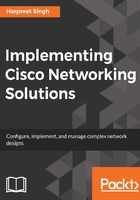
Data center
Any IT-enabled organization has a large number of applications and data that are crucial for the business operations of the organization. These applications and data can be of multiple types, and different roles within the organization need to access different data and applications. At the same time, these applications and data have to be secure and highly available, as any availability disruption for these systems would mean loss of revenue for the company.
Hence, organizations centralize the data and core applications that are crucial to its business operations in facilities called data centers. From a networking standpoint, the data centers are locations with a very high port density and very large compute and storage capacities.
Since the primary function of the data center is to host the IT infrastructure for running the core applications, and storing critical data, the data centers need to be highly available, and secure. Generally, there is more than one data center within an organization. With the advent of cloud computing, some companies are also moving to the cloud for their DC requirements.
A data center is segmented into multiple zones to allow segmentation of the data center infrastructure and provide segregation of traffic from different types of applications from each other. One example of this segmentation could be the segregation of the development databases, and test applications in one zone that is completely segregated from the production application systems and databases.
The data center also hosts the applications such as email, and proxy servers that are used by the company's employees. Such applications need connectivity to the internet. If the DC is hosting the organization's website on a web server, these services would also need connectivity to the internet. These applications that need access from the internet are highly vulnerable to attacks from the internet and are placed in a separate segment or zone within the data center.
Some of the functions of the data center block are as follows:
- Hosting critical IT infrastructure including servers and databases
- Providing segmentation to different types of applications within the DC
- Providing secure network connectivity to the users of the organization that are connected to the campus network to access the application hosted in the DC
- Providing connectivity for the storage networks within the DC and the backup DC, also called the Disaster Recovery (DR)
- Providing a network to manage the different IT infrastructure elements within the DC through a secure management network
We will discuss the design of a DC in detail in Chapter 7, Understanding and Configuring Data Center Technologies to meet the aforementioned requirements.